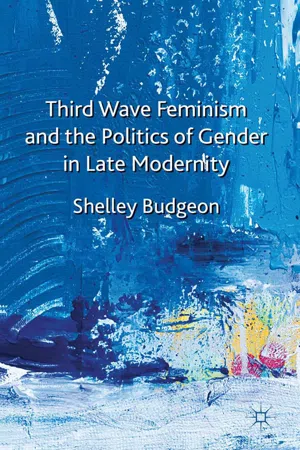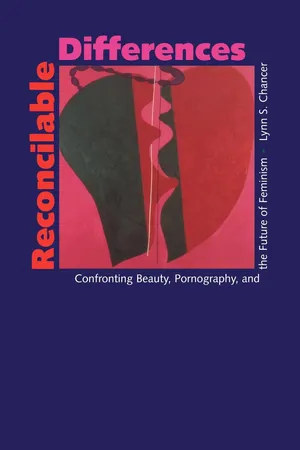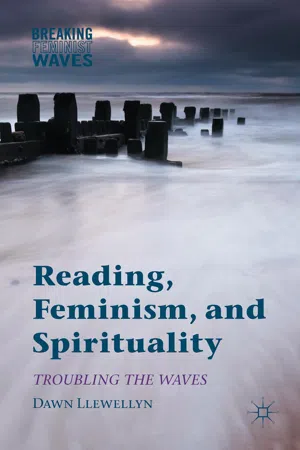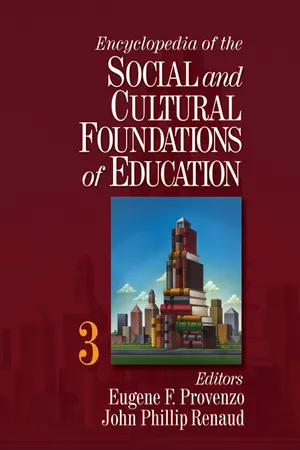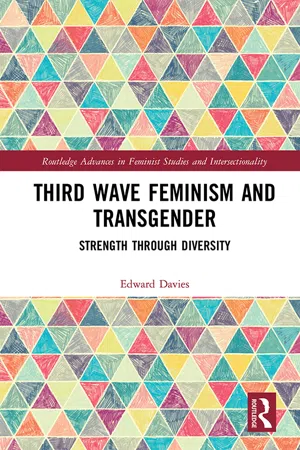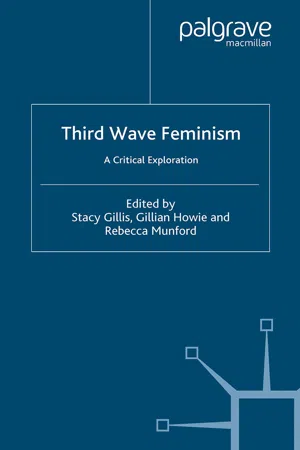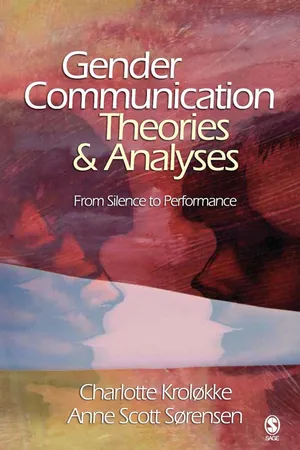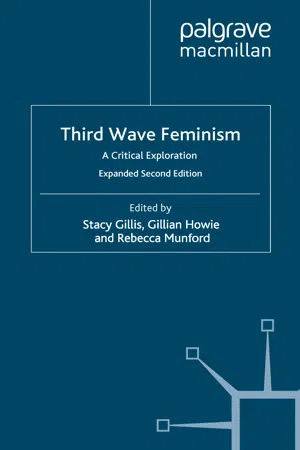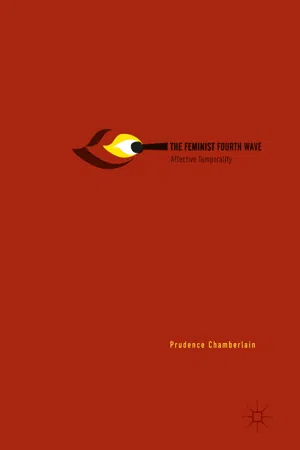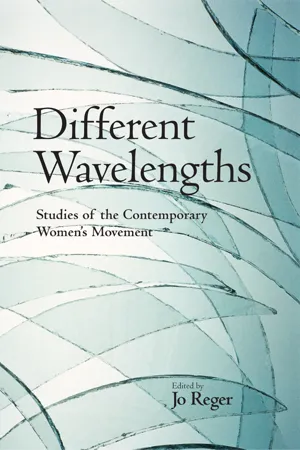History
Third Wave Feminism
Third Wave Feminism emerged in the 1990s as a response to the perceived limitations of second-wave feminism. It sought to address issues of intersectionality, diversity, and inclusivity, emphasizing the experiences of women of color, LGBTQ+ individuals, and those from marginalized communities. This wave also embraced the use of technology and social media as tools for activism and empowerment.
Written by Perlego with AI-assistance
Related key terms
1 of 5
11 Key excerpts on "Third Wave Feminism"
- S. Budgeon(Author)
- 2011(Publication Date)
- Palgrave Macmillan(Publisher)
16 Third Wave Feminism and the Politics of Gender Third Wave Feminism rejects and incorporates elements from both positions. The latter position is ‘rejected, in part, for being too con- servative and status quo’, but the ‘notions of individuality, strength and female power’ are accepted as having purchase (Arneil, 1999: 190). The individualism exhibited in third wave assertions that young women now experience a sense of self-empowerment, not available to previous generations of women, may be historicized in this way. Third wave feminists declare that feminism continues to be an active and important force in contemporary society but is one that often materializes in identities and practices not immediately associated with previously established forms of feminism. It is accepted that feminism has been fundamentally challenged by both the loss of a unified subject ‘woman’ and a perceived lack of relevance to women’s lives, but that it is possible to develop ways of rethinking gender from a perspective that may still be identified as feminist in nature. Indeed third wave writers view the uncertainty that contemporary social change has brought to an analysis of gender relations as an opportunity to move beyond a post-feminist impasse to engage in the creation of a revitalized feminist project. Female empowerment and success Studying Third Wave Feminism and grappling with its significance necessitates working with a definition of ‘feminism’ based more on difference than on commonality and upon contradiction rather than upon coherence. Third Wave Feminism prioritizes an analysis of indi- vidual subjectivities rather than the formation of group identity. With women’s collective right to equality more firmly established, Third Wave Feminism shifts attention to the subjective and individu- alized experiences of women as they develop their own relationship to feminism.- eBook - PDF
Reconcilable Differences
Confronting Beauty, Pornography, and the Future of Feminism
- Lynn S. Chancer(Author)
- 2023(Publication Date)
- University of California Press(Publisher)
C H A P T E R N I N E Third-Wave Feminisms and Beyond In 1 9 9 1 1 wrote a column in the Village Voice calling for a "third wave" of feminism. 1 At the time, many friends, colleagues, students, and activ- ists with whom I discussed feminist politics shared the belief that new inspiration was needed to reverse the debilitating effects of the Reagan- Bush years. Thus, the potential of third-wave feminism was that it aug- ured the revitalization of a movement, not merely the renaissance of a term. It symbolized the possibility of shifting from the defensive posture of the 1980s and 1990s to a collective assertiveness much more charac- teristic of the feminist movement during the 1960s and 1970s. But feminist "collectivity" itself needed to evolve in the direction of broader participation and democratization. A third wave of feminism would be continuous with and yet different from its predecessors, re- flecting its unique historical moment. It would not abandon but would further realize transformative hopes expressed by many early radical feminists and feminist radicals (many of whom had backgrounds more diverse in class, racial, and sexual orientation, and were concerned about these diverse forms of discrimination, than is usually recognized in dominant media depictions of an allegedly only middle- to upper- class women's movement). 2 Yet issues concerning race, class, and sexual discrimination would be placed at the core of a feminist program even more publicly and thoroughly than the overall movement has succeeded in doing previously; 3 its leadership would reflect a third wave's renewed determination to base itself on the concerns of all women (thereafter 265 266 Feminist Futures bringing immense benefits to all human beings, as befits hopes for a world in which feminism itself would eventually become unnecessary). - eBook - PDF
Women's Rights
People and Perspectives
- Crista DeLuzio(Author)
- 2009(Publication Date)
- ABC-CLIO(Publisher)
Third Wave Feminists: The Ongoing Movement for Women’s Rights Janice Okoomian The problem is that, while on a personal level feminism is everywhere, like fluoride, on a political level the movement is more like nitrogen: ubiquitous and inert. —Baumgardner and Richards 2000, 18 Introduction: The “ Wave ” Metaphor “Third Wave Feminism” is a term “generally used to describe three intercon- nected concepts: generational age, ideological position, and historical moment” (Henry 2004, 34). Third Wavers are usually younger feminists, born in the early 1960s or later, who have a distinct set of political or ideological beliefs arising from the social and historical conditions of their era. This chapter traces the rise of the Third Wave as an historical movement. The metaphor of feminist waves helps us to identify commonalities and differences between large groups of feminists who differ by age, historical period, and ideology. Nevertheless, it is important as we proceed to keep in mind the drawbacks of the waves framework. For one thing, this framework may imply that femi- nist disagreements are trivial mother/daughter squabbles rather than genu- ine political debates. The waves model also tends to exaggerate ideological and historical differences, when in fact there is considerable continuity in Second and Third Wave Feminisms. It is more accurate to think of Third Wave Feminism as both a departure from and a continuation of Second Wave feminism. This view yields a more complex and historically rich picture of U.S. feminism over the past 40 years. 12 WOMEN’S RIGHTS P E R S P E C T I V E S I N A M E R I C A N S O C I A L H I S T O R Y 208 Background: Postfeminism and Backlash By the late 1980s, feminism was dead — or so the media had repeatedly claimed. Writer Erica Jong discovered, for instance, that between 1969 and 1998, Time magazine announced the demise of feminism 119 times. - eBook - PDF
Reading, Feminism, and Spirituality
Troubling the Waves
- Dawn Llewellyn(Author)
- 2016(Publication Date)
- Palgrave Macmillan(Publisher)
The third wave was set in motion by the realization that underlying the use of “woman” and “woman’s experience” in sec- ond wave feminism and theology was an assumed, essential, univer- sal, fixed female identity, and a reductionist vision of patriarchy as the single cause of gender oppression and inequality. Moreover, the very categories that feminism declared necessary had been adopted without critically addressing their basis in patriarchal definitions of woman’s identity and experience: “[The concept of woman] is over- crowded with the over-determination of male supremacy, invoking in every formulation the limit, contrasting Other, or mediated self- reflection of a culture built on the control of females” (Alcoff, 1998, p. 405). In using these terms to mark women’s gendered distinction from men, feminism had called upon the same notion of woman fab- ricated through and by patriarchal societal structures. The construc- tionist refutation of foundational categories and the rethinking of their deployment in terms of particular, historical, cultural, socially situated, and plural women’s identities and experiences prompted the third wave’s beginnings. This most recent branch of feminism diverges from second wave feminism’s trajectory because it moves to understand and nuance individuality and community differently, a critique that stems from the anti-essentialism of postcolonial and gen- erational feminisms. A Postcolonial Critique In Third Wave Agenda, one of the initial third wave publications, Leslie Heywood and Jennifer Drake state that the work of women of color, womanist, mujerista, lesbian, Asian, and other self-named theorist’s critiques of the “white woman’s movement” represents the “definitional moment” of Third Wave Feminism (1997b, p. 8) by critiquing the notion of a universalized community of women that eradicated individual differences. - Eugene F. Provenzo, Jr., Eugene F. Provenzo(Authors)
- 2008(Publication Date)
- SAGE Publications, Inc(Publisher)
Third Wave Feminism Third Wave Feminism has contributed to feminist the-ory in education by critiquing second wave feminist theory for its lack of attention to other power issues that influence varied gendered experiences and expres-sions. Attention is currently being placed on the assumed positions of power with first and second wave feminism. Earlier feminist theory is being critiqued for its lack of awareness or attention to norms of Whiteness, property-owning classes, heterosexuality, and ablebodiedness, for example. Third World women who have received higher levels of education in First World universities are now able to contribute to the conversation as scholars and have their voices heard. They are offering critiques of First World colonization and the arrogance of its assuming to know Third World women and their needs. Third wave feminists offer sharp criticisms of their earlier sisters’ work, which is unfortunately causing that earlier work to disappear from conversations and classrooms, setting up again what will become the need for future recovery work of women’s contributions to scholarship. In the classroom, third wave feminists have ques-tioned the idea that a classroom can ever be a safe environment, as second wave feminists tried to make it, for there are too many power issues involved. Not only is safety an impossibility, it is questionable whether it is even a worthy ideal, as it is through risk and discomfort that we learn to trouble the basic cate-gories we take as a given and begin to experience the cracks and fissures and see the faults and weaknesses in our worldviews. In this space of discomfort and unease is where education as growth can take place. Third wave feminists emphasize our plurality and dif-ferences as they uncover the hidden colonization of the 1960s melting-pot metaphor, which argued for 342 ——— Feminist Theory in Education- eBook - ePub
Third Wave Feminism and Transgender
Strength through Diversity
- Edward BURLTON Davies, Edward Davies(Authors)
- 2018(Publication Date)
- Routledge(Publisher)
The third wave considers these effects of modern life while drawing from developments made in other feminist waves to form what is arguably an identifiably new feminism. However, it can be contended that Third Wave Feminism shouldn’t necessarily have to present itself as different to the first two waves just for the sake of innovation or novelty. This contention mirrors the way that some contemporary trans narrators have endeavoured to understand the effects of trans subjectivity rather than pursue a quest for its aetiology and definition. 1 Nevertheless, as Rebecca Walker speculated of the new generation of feminist writers, ‘ They change the face of feminism as each new generation will, bringing a different set of experiences to draw from, an entirely different set of reference points, and a whole new set of questions ’ (1995:xxxiv). Whether these new writers are ‘third wave’ is an area for speculation, partly because few feminists seem to self-describe as ‘third wave feminist’. This may be because feminists prefer to investigate rather than administer labels and are still investigating the nature and validity of the label, ‘Third Wave Feminism’. Below are four suggested areas that appear to suggest the nature of third wave philosophy, a philosophy-in-process that relates to, and holds potential to empower, gender variant subjectivities and transgender and feminist theories in their interactions with the law. 3.1 ‘Personally political postmodern identity’ During the 1960s and 70s, or what might be called the chronological second wave, feminism was very much influenced by social construction theory. This opened up the nature/nurture debate with regard to the development and essence of gender and later became of importance to trans people searching for explanations of their trans subjectivity - eBook - PDF
Third Wave Feminism
A Critical Exploration
- S. Gillis, G. Howie, R. Munford, S. Gillis, G. Howie, R. Munford(Authors)
- 2004(Publication Date)
- Palgrave Macmillan(Publisher)
The development of adventurous methodologies and theories for exploring the transformations in meanings of women and nature has been a challenge through all waves, and remains a necessary and ongoing project for eco/feminists, one which activists are engaged in as much as academics are. Notes 1. With thanks to: participants in the Third Wave Feminism conference at the University of Exeter (July 2002) for comments on the oral version of this chapter; to Margaretta Jolly for ongoing conversations about Greenham, feminism, and activism; to the editors for their comments; to Maxine Badger, Bridget Byrne, Rebecca Duffy, Andrea Hammel, Joan Haran, Tee Rogers-Hayden, and Anne Rudolph for comments and conversations on earlier drafts of this chapter; and to Elle Osborne for conversations about waves on the beach at Brighton. The writing of this paper was supported by a Sociological Review Fellowship at Keele University. 2. Throughout I use ‘eco/feminism’ to gesture towards sometimes fruitful, sometimes unproductive, tensions between ecofeminism and feminism. Ecofeminism is both ‘of’ feminism and offers a critique of it. Ecofeminism is not unusual here as such tensions define feminism. There has been a proliferation of feminisms as critiques of feminism have been made by lesbian feminists, black feminists, and from the disability movement. 3. For some, such as Hokulani Aikau, Karla Erickson, and Wendy Leo Moore, the third wave denotes a cohort of women who have come to feminism through academia rather than through activism in the second wave women’s movement. Others, such as Ednie Kaeh Garrison and Rhoda Shaw, use the third wave to denote a cohort of women who have come to feminism through popular culture, particularly music, and phenomena such as Riot Grrrl and through use of new media technologies and the Internet, and relatedly through environmental and anti-globalisation activism. 4. See Joan Haran’s dissertation for an excellent account of this process. - eBook - ePub
Gender Communication Theories and Analyses
From Silence to Performance
- Charlotte Krolokke, Anne Scott Sorensen(Authors)
- 2005(Publication Date)
- SAGE Publications, Inc(Publisher)
The movement has simultaneously criticized sexist language, appropriated derogatory terms for girls and women, and invented new self-celebrating words and forms of communication. As such, third-wave feminists have followed in the footprints of groups like Queer Nation and Niggers With Attitude by deploying a kind of linguistic jiujitsu against their enemies. Instead of condemning the stereotypes used against them, they exaggerate them, beginning with the very word girl (Chideya, Rossi, & Hannah, 1992). For girls to pick up guitars and scream their heads off in a totally oppressive, fucked up, male dominated culture is to seize power. . . we recognize this as a political act. — Tobi Vail, Bikini Kill Third-wave feminists are motivated by the need to develop a feminist theory and politics that honor contradictory experiences and deconstruct categorical thinking. In To Be Real: Telling the Truth and Changing the Face of Feminism (1995), editor Rebecca Walker described the difficulty that younger feminists experience when forced to think in categories, which divide people into “Us” and “Them,” or when forced to inhabit particular identities as women or feminists (p. xxxiii). Walker claimed that this is not because they lack knowledge of feminist history or because of the media’s horrific one-sided portrayal of feminism. Quite to the contrary, younger feminists honor the work of earlier feminists while criticizing earlier feminisms, and they strive to bridge contradictions that they experience in their own lives. They embrace ambiguity rather than certainty, engage in multiple positions, and practice a strategy of inclusion and exploration (p. xxxiii). Meanwhile, they propose a different politics, one that challenges notions of universal womanhood and articulates ways in which groups of women confront complex intersections of gender, sexuality, race, class, and age-related concerns - eBook - PDF
Third Wave Feminism
A Critical Exploration
- S. Gillis, G. Howie, R. Munford, S. Gillis, G. Howie, R. Munford(Authors)
- 2007(Publication Date)
- Palgrave Macmillan(Publisher)
Though a ‘multicultural feminism’ appears to stretch the influence and applicability of postcolonial feminist theory, the metaphor of the third wave can also enrich the discussion as it can teach us about the process of feminism, in its various formats and endless vari- eties. The remit of the third wave can also include the questioning of how Western feminist theories still influence postcolonial (and Third World) feminist practice. Without wishing to extend the wave metaphor too far, I will argue that it does allow for a variety of crests to form that are not in competition with each other but which allow for a variegated prominence; a position that changes and subsides as situations change and new ones are formed. Though to an extent I agree with Shohat’s argument that ‘U.S. women of color and Third World women’s struggle over the past decades cannot conform to the orthodox sequence of “first waves” and “second waves,” just as multicultural feminism cannot be viewed as simply a recent bandwagon phenomenon’ (19), it is still important to accept, as the examples to follow will illustrate, that though not all women’s struggles can conform to the wave sequence, many are still negotiating their response and allegiance to this sequence. Whilst we all cannot help but work within particular contexts, and whilst our work is inflected by our own locality and interests, the con- cept of the third wave may be a meeting point rather than an end point. As Sara Ahmed asks, ‘how does the consumption of strangers involve a transformation in the subject who consumes?’ (115). Shohat’s concept of a ‘mobile cohabitation of alliances’ (15) can act as the broad umbrella under which various feminisms/strangers can operate, whether at the political level or at the academic level, addressing the ‘schism’ at the heart of feminist concerns (Gillis, Howie and Munford 4). - eBook - PDF
The Feminist Fourth Wave
Affective Temporality
- Prudence Chamberlain(Author)
- 2017(Publication Date)
- Palgrave Macmillan(Publisher)
In spite of the claims being made for intersectionality, both long-established and contemporary, there are still ongoing problems of race within feminism. This, more recently, has extended to difficulties around the inclusion of trans women. While race and trans issues are distinctly different from one another, they do trouble the intersectionality being claimed for the current and previous wave. What might these issues suggest for time, and what demands do they place on the future of feminism? Ultimately, I will go on to address two factors central to any affective temporality: the potential divisions of feminism, and, the external eco- nomic, social and cultural climate. Feminism has always been comprised of groups, each with slightly different emphasis or focus, ensuring that the social movement remains diverse and multiple. While this can be incredibly effective and useful for maintaining a sense of internal 156 The Feminist Fourth Wave critique, it can also lead to strong division which deters from the momentum of a wave’s affective temporality. In the intensity of an affective surge, these divisions might not appear as fundamental to the politics, but as the rush of the moment starts to slow, they become increasingly evident and problematic. I will ask what kind of divisions might come to characterise the fourth wave, and how, ultimately, they might lead to a dissipation of the affective intensity sustaining this moment. A wave’s affective temporality is largely constituted by the society to which it is responding, and it is possible that the fourth wave has been consolidated through the UK’s current economic climate, in particular austerity measures (Cochrane 2014; Evans 2015). Cuts to women’s services as well as a decrease in benefits has had a dispropor- tionate effect on women, making a surge in feminism increasingly necessary. - eBook - ePub
Different Wavelengths
Studies of the Contemporary Women's Movement
- Jo Reger(Author)
- 2014(Publication Date)
- Routledge(Publisher)
Online discussion groups and other online feminist organizations are now able to quickly activate through immediate asynchronous networks. Moreover, online feminist discussion groups explore the idea of creating a home, a place where participants can replenish and sustain themselves for their everyday and ongoing activist goals. Activism in many of these third wave communities is what Jennifer Baumgardner and Amy Richards refer to as an “everyday activism” that has no immediate or directly visible effects or consequences. 1 In this sort of activism, leaders are not as visible, and groups are formed in response to immediate and temporary political actions. Although it may seem vague and ambiguous in its effects, third wave activism has the potential for a slow accretion of results and the ability to make change on a personal everyday level. Activism in third wave communities rarely results in definitive, immediate, or decisive victories; rather, it is molded by small, everyday, niche events or protests, and is driven by temporary leaders who take up for a particular cause at a particular time. While this is also true for second wave feminism, Third Wave Feminism provides, through the medium of technology, a potentially strong voice to every participant, and a mobilized and ever present sense of home and community
Index pages curate the most relevant extracts from our library of academic textbooks. They’ve been created using an in-house natural language model (NLM), each adding context and meaning to key research topics.
